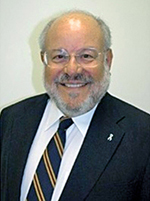Suffolk Closeup: Bad season ahead for Lyme disease

This could be a bad year for Suffolk County for Lyme disease — the malady that residents of the Island and the county were numbered among the earliest victims.
“Forbidding Forecast for Lyme disease in the Northeast,” was the title of a report last month on National Public Radio’s “Morning Edition.” Neither that program nor NPR are prone to exaggeration.
“Ticking time bomb … Lyme disease is set to explode in the U.S. this year,” was the headline this month of an article in a publication also known for careful journalism, New Scientist.
Both told similar stories. The NPR report began with findings of ecologists Felicia Keesling and Rick Ostfeld who have studied Lyme for more than 20 years, she at Bard College, he at the Cary Institute of Ecosystem Studies, both in the Hudson River Valley upstate.
“The Hudson River Valley experienced a mouse plague during the summer of 2016,” related NPR. “For most people it was just a nuisance. But for Keesling and Ostfeld, the mouse plague signaled something foreboding. ‘We’re anticipating 2017 to be a particularly risky year for Lyme,’ Ostfeld says. They can predict how many cases there will be a year in advance by looking at one key measurement: Count the mice the year before. The number of critters scampering around the forest in the summer correlates to the Lyme cases the following summer, they’ve reported.”
“Mice are highly efficient transmitters of Lyme,” NPR continued. (Mice and deer are the prime transporters of ticks carrying Lyme disease.) “So that mouse plague last year means there is going to be a Lyme plague this year … Ostfeld says … He’s not exactly sure which parts of the Northeast will be at highest risk. But wherever Lyme exists, people should be vigilant, says epidemiologist Kierste Kugeler of the Centers for Disease Control and Prevention [CDC].”
The New Scientist piece, quoting Mr. Ostfeld extensively, says of the “coming outbreak” — “Thanks to a changing climate it could be one of the worst on record: the ticks that carry the disease have been found in places where it has never before been a problem — and where most people don’t know how to respond. The danger zone isn’t confined to the U.S.: similar signs are flagging potential outbreaks in Europe.”
Suffolk folks were hit early with Lyme. That could be expected considering the disease was named for Old Lyme, Connecticut where it was first identified in 1975. Old Lyme is across Long Island Sound, 10 miles from Plum Island. The 2004 book “Lab 257: The Disturbing Story of the Government’s Secret Plum Island Germ Laboratory” by attorney Michael Christopher Carroll links Lyme to the release of ticks in experiments there. Plum Island Animal Disease Center officials deny this.
Initially, in the early 1980s, the leadership of the Suffolk Department of Health Services downplayed the seriousness of the disease. In most instances it can be cured by prompt treatment with antibiotics. But ticks carrying the disease are miniscule and signs of infection don’t always appear. Some people end up with chronic Lyme disease with its profoundly debilitating impacts. It can be fatal if it gets to the heart or brain.
The disease has spread widely. In the U.S., as a map in the New Scientist article depicts, it is now in all the New England states, all over New York State and extends through New Jersey and Pennsylvania and into Maryland and Virginia. It has jumped to the Midwest affecting Indiana, Illinois, Wisconsin and Minnesota. And there is Lyme in Florida, California and elsewhere on the West Coast.
Ms. Kugeler of the CDC said in the NPR report: “We think the true burden of Lyme disease in the U.S. is about 300,000 cases yearly. Lyme disease is quite a big public health problem.”
Suffolk County government has come far on Lyme and is now fully aware of the gravity of the disease. There is a Suffolk County Arthropod-Borne Disease Laboratory headed by Dr. Scott Campbell of Shelter Island. A county lawmaker leading in the fight against Lyme has been Legislator Bridget Fleming (D-Noyac), and who last year got the county’s Tick Control Advisory Committee (now chaired by Dr. Campbell) reactivated and $100,000 in county funding for a tick testing program.
Dr. Campbell has been on vacation, traveling and unavailable, but through public relations director Grace Kelly-McGovern of the county’s Department of Health Services, he commented that there are “many variables” besides mice leading to tick populations, and the number of ticks differs substantially from area to area.
On the state level, in 2014 a bill sponsored by Assemblyman Fred W. Thiele, Jr. (I-Sag Harbor) and Senator Kenneth LaValle (R-Port Jefferson) allocating $500,000 for “Lyme Disease and Tick-Borne Prevention and Treatment” was enacted. Mr. LaValle is a member of the Senate Task Force on Lyme and Tick-Borne Diseases through which he’s been able to obtain money for anti-tick efforts in Suffolk including the 4-poster program — feeding stands that brush deer with a tickicide, permethrin. But an initiative spearheaded by Ms. Fleming for $500,000 for a Lyme disease “surveillance and management program” in Suffolk failed to be included in the new state budget.
Meanwhile, as was exposed by the 2009 documentary “Under Our Skin,” an Academy Award semifinalist and winner of 20 film festival awards, the health insurance industry has manipulated medical boards into denying the existence of chronic Lyme disease — the industry doesn’t wasn’t to pay for the expensive treatment needed.
 Karl Grossman is a veteran journalist and professor and a member of the Press Club of Long Island’s Journalism Hall of Fame. His Suffolk Closeup column is syndicated in newspapers across the county.
Karl Grossman is a veteran journalist and professor and a member of the Press Club of Long Island’s Journalism Hall of Fame. His Suffolk Closeup column is syndicated in newspapers across the county.








